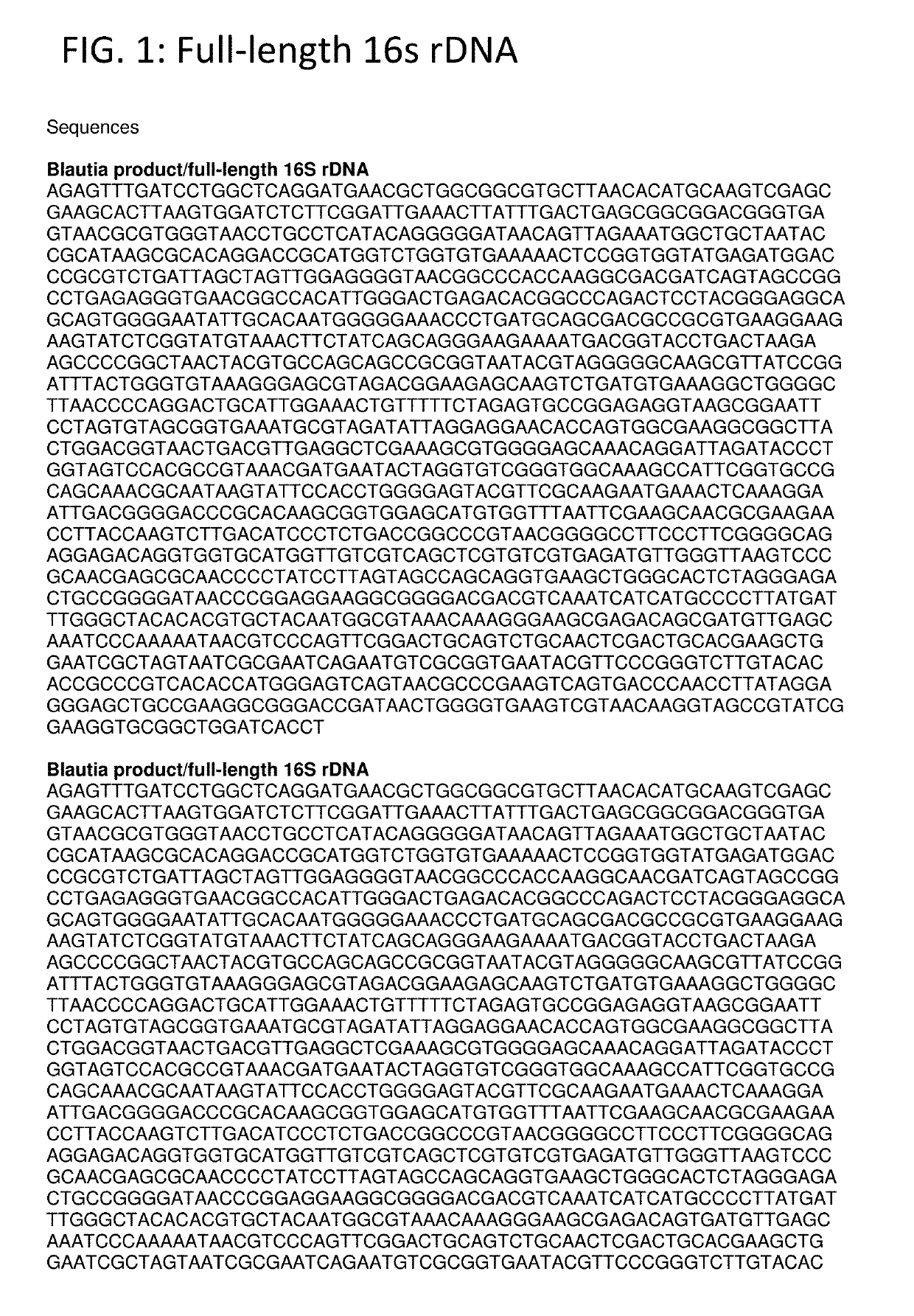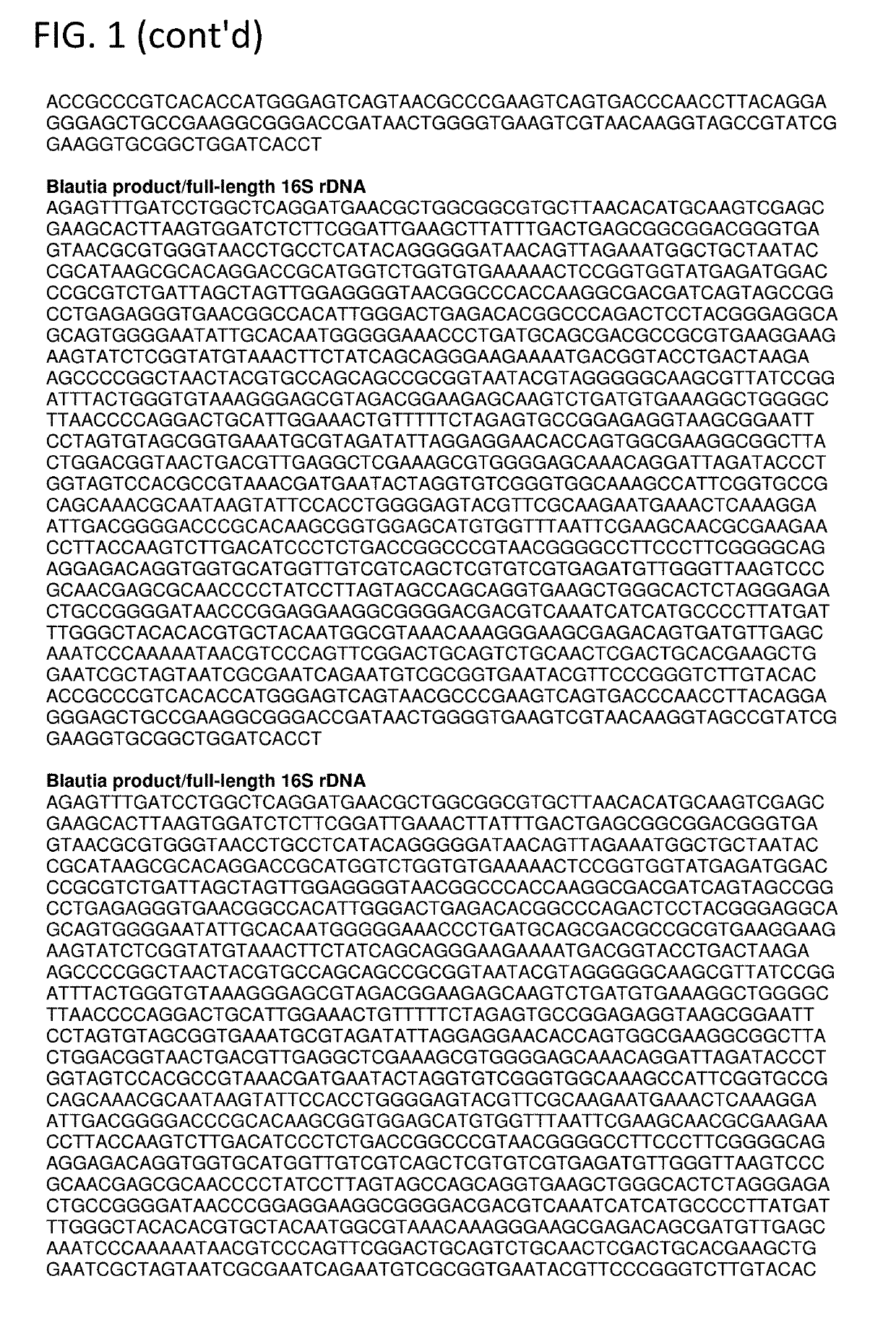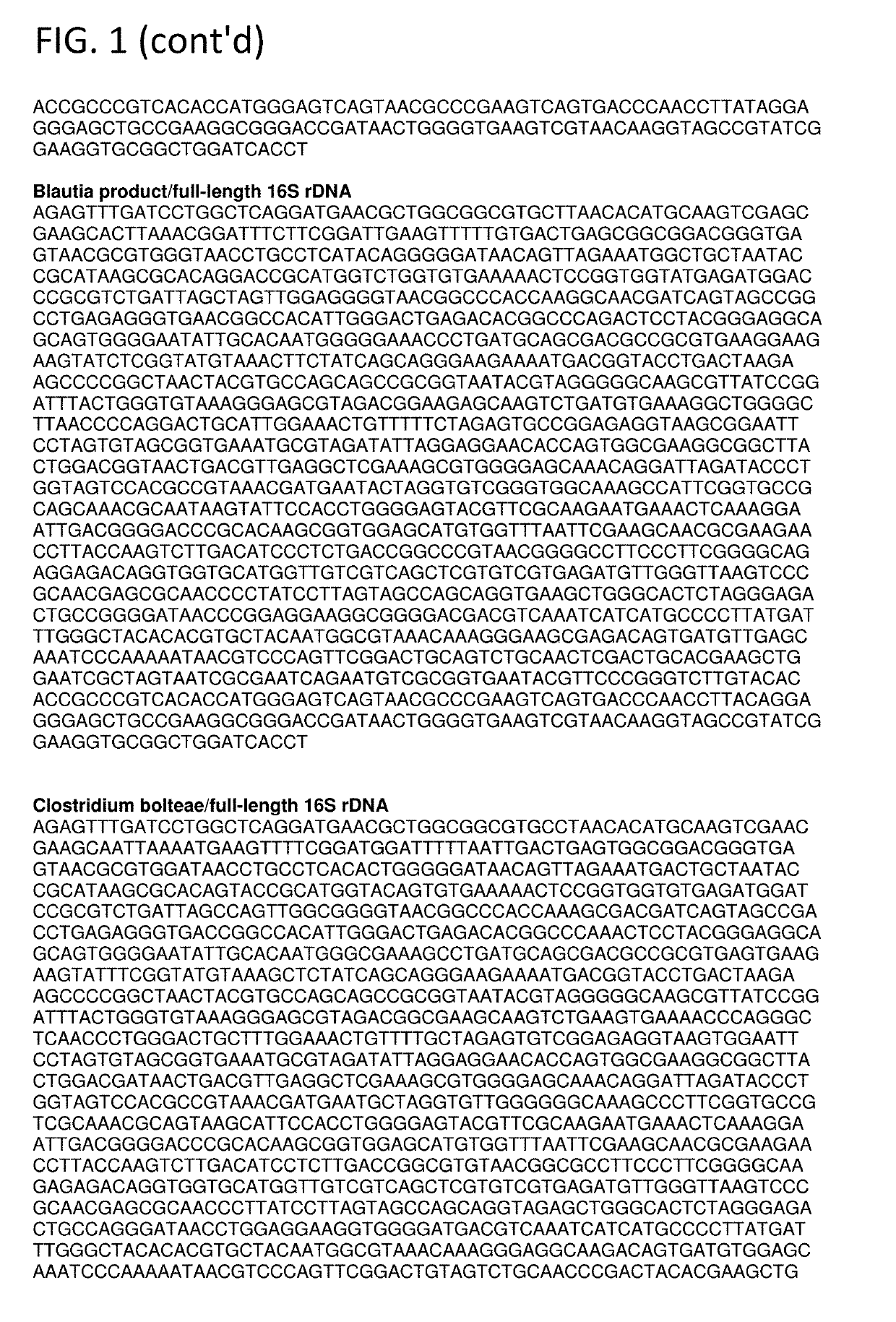Designed bacterial compositions
a technology of compositions and bacteria, applied in the field of bacteria compositions, can solve the problems of inability to control the bacterial pathogens in the gastrointestinal tract, the risk of pathogen infection by pathogenic organisms, and the inability to control the bacterial pathogens, so as to prevent or reduce the risk of at least one infection, and prevent the recurrence of an infection
- Summary
- Abstract
- Description
- Claims
- Application Information
AI Technical Summary
Benefits of technology
Problems solved by technology
Method used
Image
Examples
example 2
cles
[0107]Applicants have tested about 100 different DBCs. In one example of such an experiment, the murine model described in Example 1 was used to evaluate the efficacy of various orally administered microbial spore preparations for treating / preventing Clostridium difficile infection (CDI). Nine compositions were tested at estimated doses ranging from 1e2 to 1e5 per individual species in a composition. Estimates of the number of bacteria were based on spore colony forming unit (SCFU) assays (i.e., number of spore-derived colonies grown on a plate from a stock). Methods of performing such assays are known in the art, typically including a germinant appropriate for the species to be grown. Some compositions tested are provided in Table 3 (supra). Negative controls included PBS alone as treatment and naïve animals (not infected with C. difficile). Positive controls included treatment with a slurry of healthy human feces (FSV), and treatment with a population of bacterial spores deriv...
example 3a
lization
[0112]Antibiotics are well known to disrupt the gut microflora resulting in loss of colonization resistance and setting the stage for infections by pathogens, including C. difficile (reviewed by Keeney et al. 2014 Ann Rev Microbiol, Jun. 2, 2014. doi:10.1146 / annurev-micro-091313-103456). The contribution of nutrient competition to the resistance to colonization by C. difficile was suggested in early experiments in continuous flow models in which glucose, N-acetylglucosamine, and a sialic acid (N-acetylneuraminic acid) were identified as C. difficile carbon sources that were of limited availability due to catabolism by other gut organisms (Wilson and Perini, 1988 Infection and Immunity 56: 2610-14). More recently, in a mouse model, sialic acid utilization by C. difficile was associated with higher C. difficile levels (Ng et al. 2013 Nature advance online publication (Sep. 1, 2013). doi:10.1038 / nature12503). Accordingly, a useful feature of a DBC is bacteria that have the abil...
example 3b
[0119]Experiments supplementing those described in Example 3A were carried out to extend knowledge of the carbon sources that can be used by C. difficile strains and the repertoire of carbon utilization for bacteria that may be useful in a DBC.
[0120]Three C. difficile strains and 12 non-C. difficile bacterial strains were profiled using a panel of carbon sources. As used herein, unless otherwise indicated, carbon sources includes all sources tested as growth substrates in the experiments herein. The three C. difficile strains were Clostridium difficile ATCC 9689, Clostridium difficile ATCC 43593, and Clostridium difficile ATCC 43255, all of which are available from the American Type Culture Collection (ATCC).
[0121]Growth of the strains was tested on 87 different carbon sources in a 96-well plate format. The panel contained 34 carbon sources reported to be utilized by C. difficile in the literature (Hafiz and Oakley. 1976 J Med Microbiol 9:129-36; Wilson and Perini....
PUM
 Login to View More
Login to View More Abstract
Description
Claims
Application Information
 Login to View More
Login to View More - R&D Engineer
- R&D Manager
- IP Professional
- Industry Leading Data Capabilities
- Powerful AI technology
- Patent DNA Extraction
Browse by: Latest US Patents, China's latest patents, Technical Efficacy Thesaurus, Application Domain, Technology Topic, Popular Technical Reports.
© 2024 PatSnap. All rights reserved.Legal|Privacy policy|Modern Slavery Act Transparency Statement|Sitemap|About US| Contact US: help@patsnap.com










